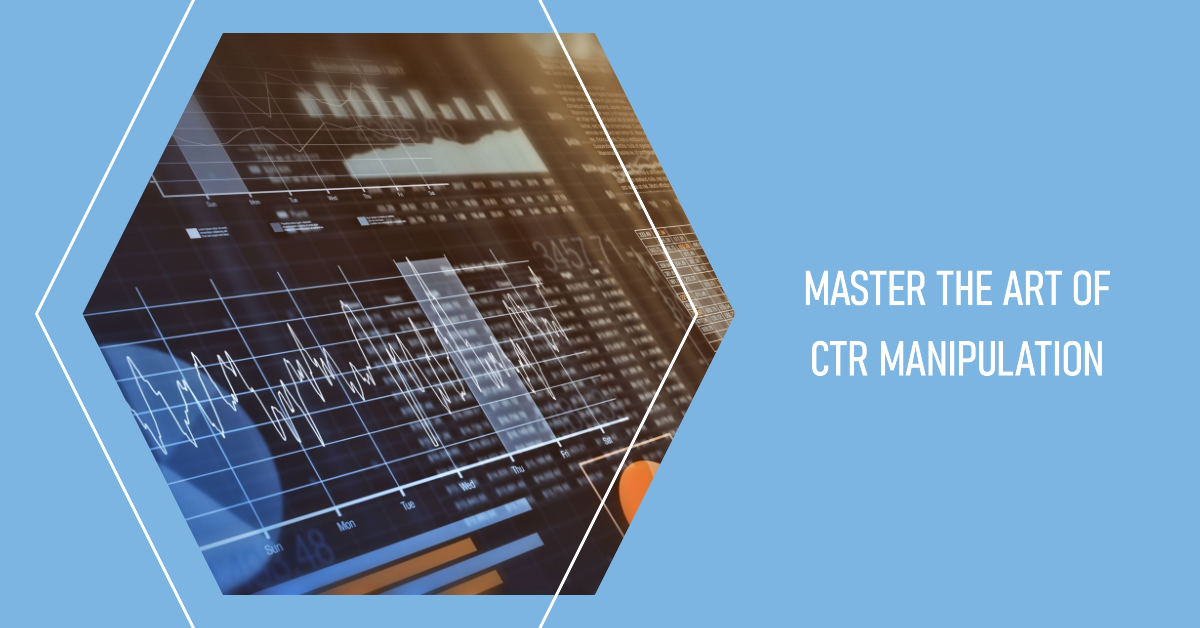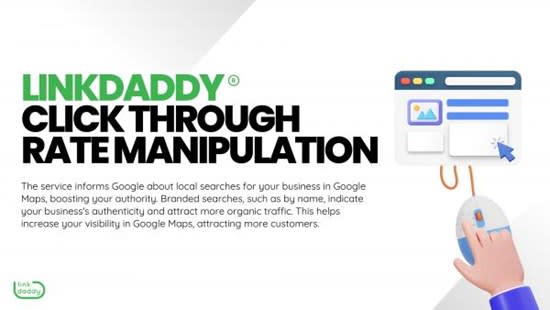LinkDaddy CTR Manipulation-- Proven Approaches for Better Online Involvement
LinkDaddy CTR Manipulation-- Proven Approaches for Better Online Involvement
Blog Article
CTR Manipulation: A Game Changer for Digital Campaigns
The increase of CTR adjustment has undoubtedly changed digital advertising techniques, offering online marketers with devices to enhance engagement and drive web traffic efficiently. What ramifications might this balancing act hold for the future of digital campaigns?
Understanding CTR Adjustment
Although click-through price (CTR) manipulation might appear like a simple technique in digital marketing, it incorporates a variety of methods intended at artificially pumping up involvement metrics. This manipulation can take numerous types, including using click ranches, bots, or deceptive advertisement placements that misguide customers into clicking. These techniques can jeopardize the stability of efficiency data, making it testing for marketing experts to gauge the authentic effectiveness of their projects.
In addition, CTR adjustment increases ethical worries, as it undermines the openness of electronic advertising and marketing. The reliance on filled with air metrics can cause misdirected advertising and marketing choices, skewing source allocation and campaign strategies. As a result, companies may spend greatly in networks and tactics that show up successful but do not produce genuine involvement or conversions.

Benefits of Click-Through Price Optimization
Maximizing click-through price (CTR) is necessary for boosting the efficiency of digital marketing projects. A higher CTR suggests that a larger percentage of customers are engaging with the content, which can lead to raised internet site web traffic and far better conversion prices. By enhancing CTR, brands can effectively allot their advertising and marketing sources to efforts that yield the greatest returns.
Among the main advantages of CTR optimization is the capacity for improved ad placement and reduced prices - CTR Manipulation. Platforms like Google Ads award higher CTRs with far better ad positioning and reduced cost-per-click (CPC), permitting marketing professionals to stretch their budgets additionally. Additionally, a well-optimized CTR can boost brand presence, as higher interaction rates usually correlate with raised organic reach

Strategies for Effective CTR Adjustment
To efficiently control click-through rates (CTR), online marketers can use a variety of calculated techniques that improve customer engagement and drive web traffic. One essential approach is enhancing advertisement copy to create compelling and action-oriented language. CTR Manipulation. Making use of strong call-to-action (CTA) phrases urges users to take instant activity, raising the likelihood of clicks
One more efficient strategy is A/B testing, which permits marketing professionals to contrast various ad variants. By methodically analyzing efficiency metrics, they can determine which components resonate finest with the target market, therefore fine-tuning their methods for maximum influence. Furthermore, leveraging you can try here visually enticing graphics and succinct messaging can capture attention swiftly, making it a lot more likely that users will engage.

Finally, optimizing landing pages to ensure a seamless customer experience can lower bounce prices and urge more communication, eventually promoting higher CTR. By incorporating these strategies, marketers can properly adjust CTR to attain their campaign objectives.
Measuring Success in Digital Projects
Determining success in digital campaigns needs a clear understanding of crucial performance indications (KPIs) that straighten with campaign objectives. KPIs work as measurable browse around this site metrics that assist assess the effectiveness of numerous methods utilized throughout the campaign. Usual KPIs include click-through prices (CTR), conversion prices, price per procurement (CPA), and return on investment (ROI)
To properly determine success, it is vital to establish details, measurable objectives first of the project. If the main purpose is to boost brand name understanding, metrics such as impressions and engagement rates might be focused on. In contrast, projects focused on straight sales would certainly profit from a much more thorough analysis of conversion prices and income generated.
Routine evaluation of these KPIs enables online marketers to make data-driven choices, optimizing their methods in real-time. Making use of logical tools can help in monitoring performance and determining fads, allowing for quick changes to enhance campaign end results. Ultimately, a detailed approach to measuring success not just highlights locations for improvement but additionally strengthens the general efficiency of digital marketing efforts, driving continual development and interaction in the long-term.
Future Fads in Digital Marketing
Expecting the future of digital advertising exposes a landscape formed by quick technical advancements and changing consumer habits. As man-made knowledge and artificial intelligence remain to progress, marketing experts will increasingly leverage these technologies to personalize campaigns at an unprecedented scale. Predictive analytics will enable brand names to prepare for consumer demands, maximizing advertisement positionings and material distribution in genuine time.
Additionally, the increase of voice search and wise devices is transforming just how customers connect with electronic material. Marketing professionals will need to adjust their approaches to make sure exposure across multiple systems, consisting of voice-activated assistants. This shift demands a concentrate on conversational advertising, emphasizing engagement through dialogue instead than standard advertising strategies.
Additionally, privacy issues are prompting adjustments in data collection techniques. Transparency and ethical information usage will certainly end up being critical, driving brands to promote depend on find and loyalty among customers. The continuous evolution of social media systems will likewise influence advertising and marketing methods, with a heightened focus on authenticity and user-generated web content.
Final Thought
In recap, CTR manipulation represents a considerable innovation in digital marketing techniques, using instant advantages via enhanced engagement metrics. Nevertheless, the honest considerations surrounding such methods require a cautious technique to make certain long-term brand name honesty and real target market link. By striking a balance between optimization strategies and genuine involvement, marketing experts can grow lasting connections with consumers. The ongoing evolution of digital marketing will certainly depend upon this delicate interplay, forming the future landscape of brand-consumer communications.
Report this page